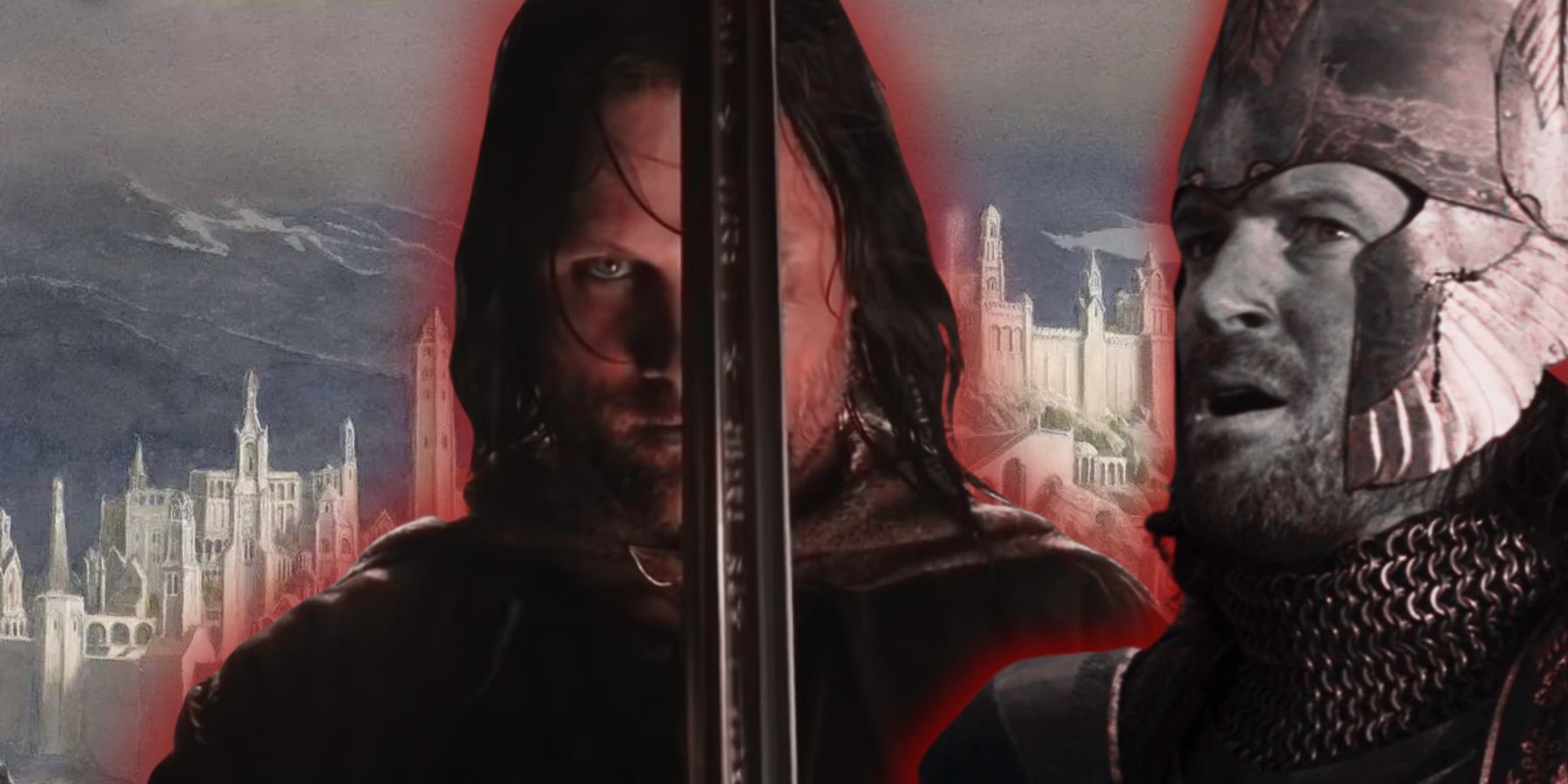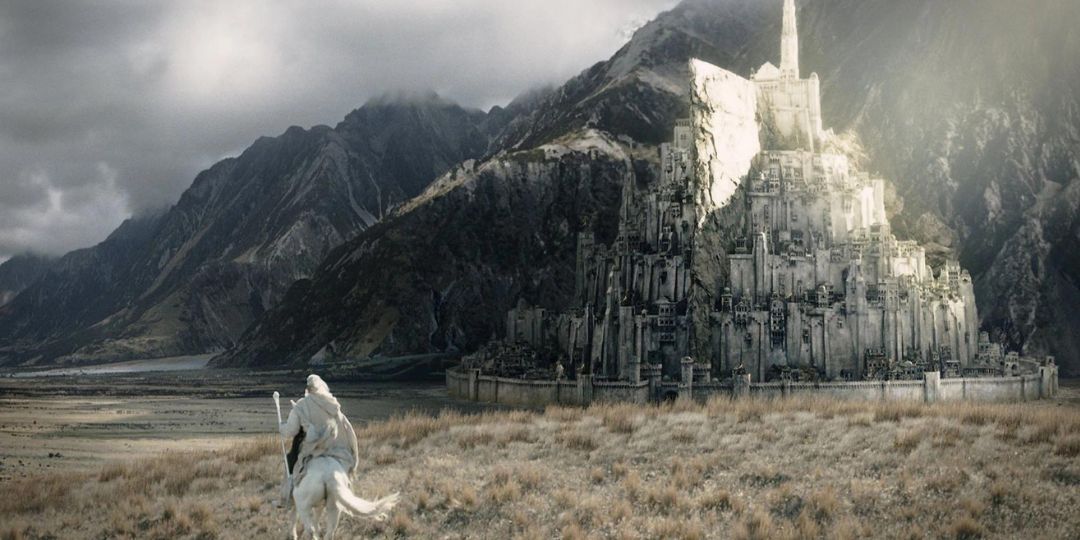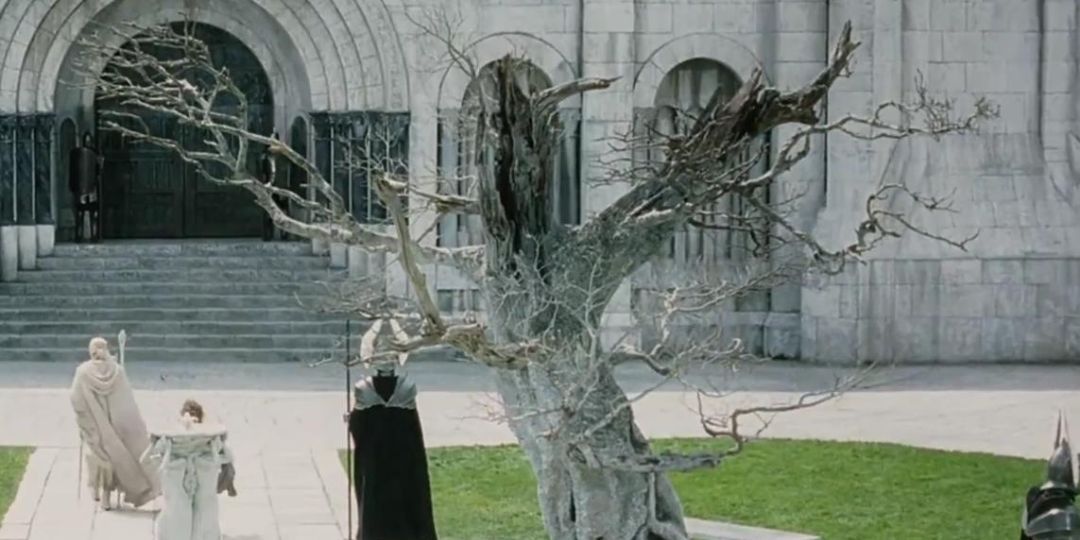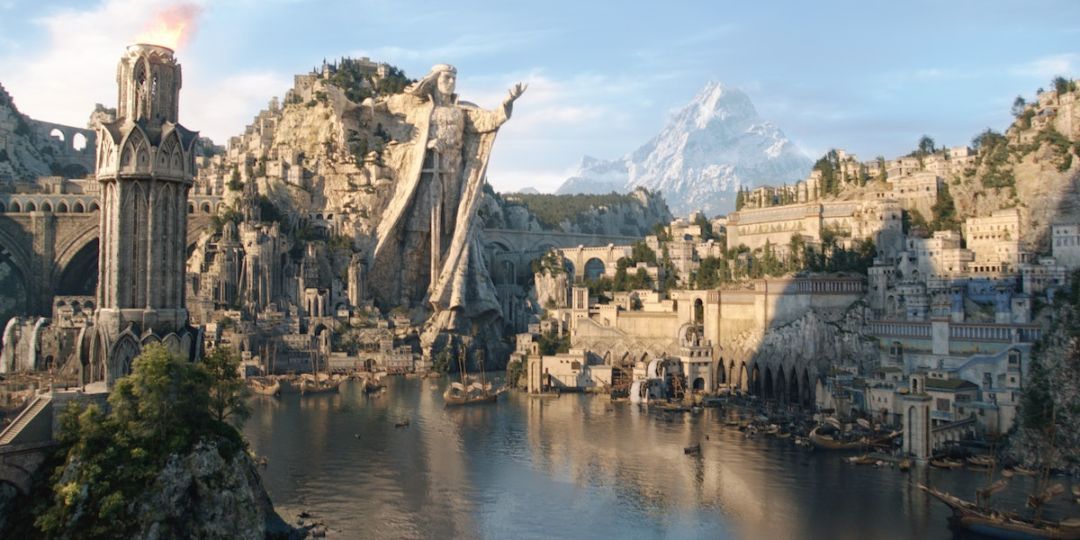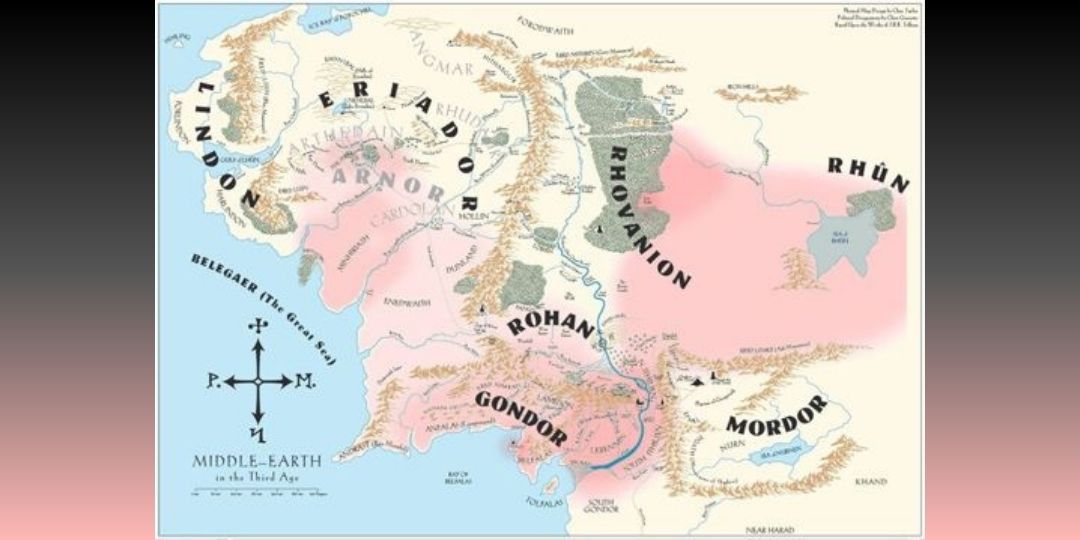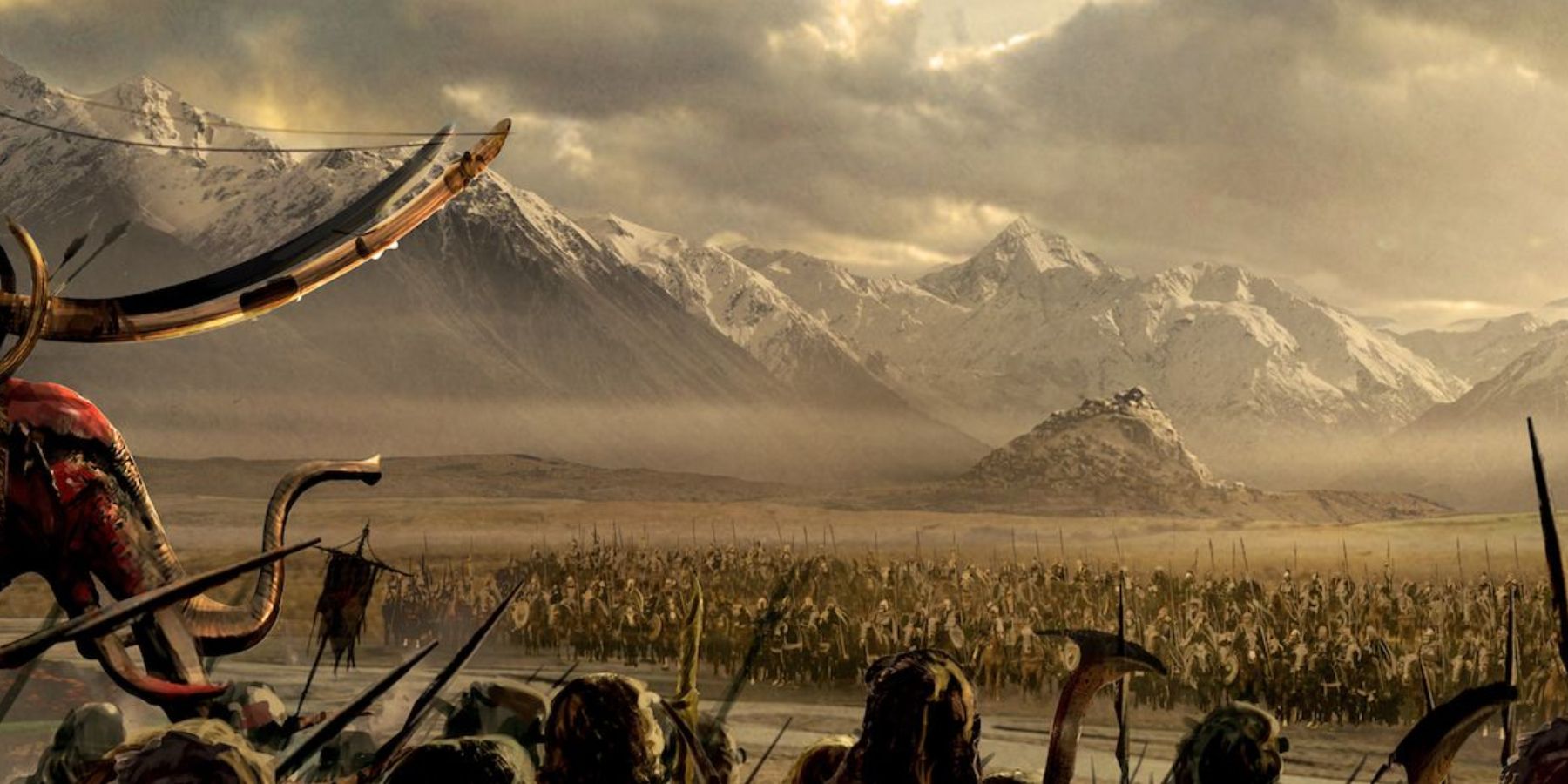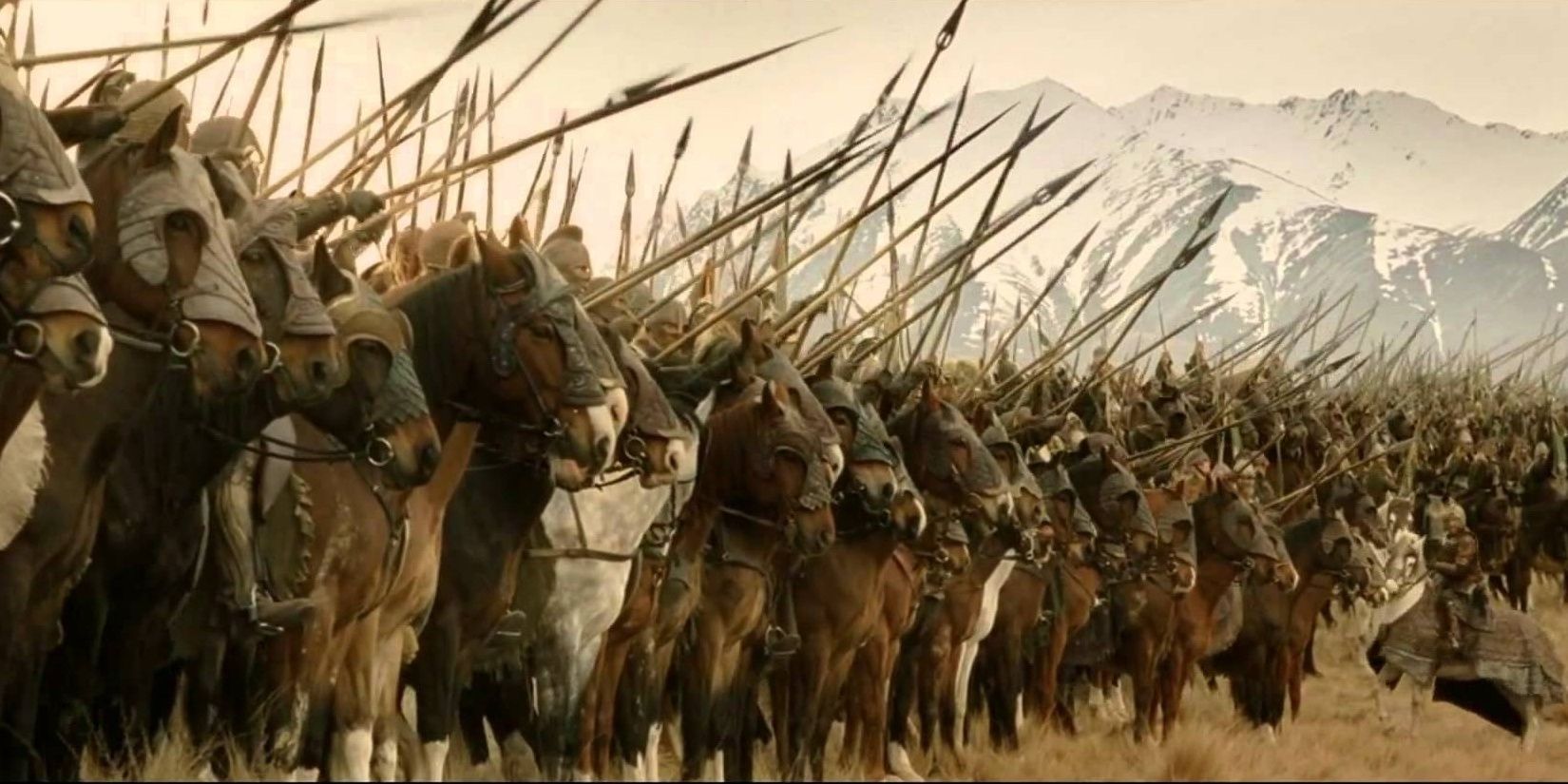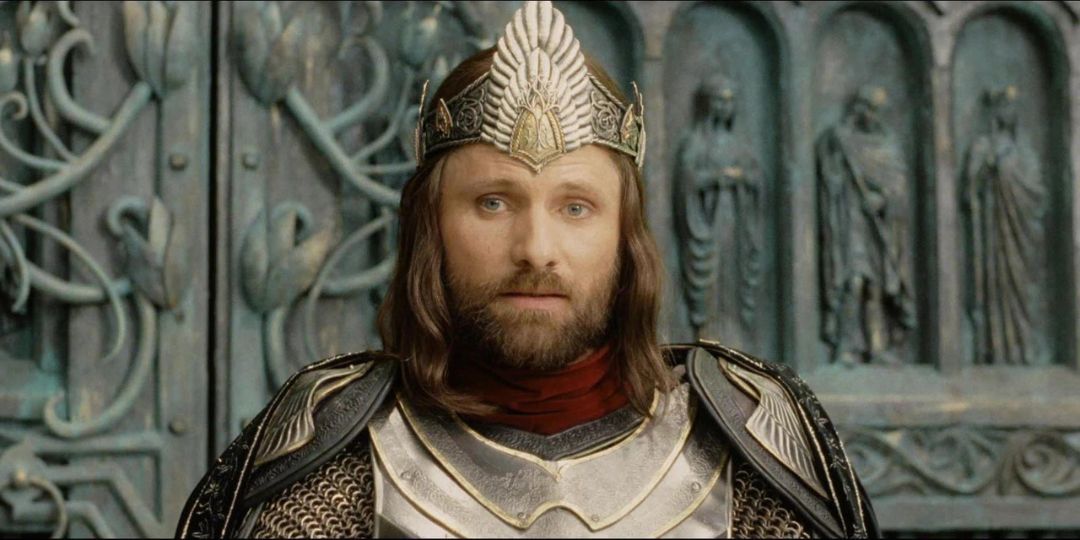Dubbed the greatest realm of Men by the end of the Third Age in Middle-earth, Gondor has a storied past. The kingdom figures prominently into The Return of the King, the final book in J.R.R. Tolkien’s The Lord of the Rings trilogy, and plays a key role in the restoration of Middle-earth following the War of the One Ring.
However, beyond its achievements and greatness, the rest of Gondor’s history is equally intriguing. That past begins with the destruction of the island kingdom of Númenor, the once-greatest civilization of Men.
Why Is Gondor So Important?
When the Númenóreans broke the Ban of the Valar — the deities forbade the Men of Númenor from sailing too far west from the island — Eru Ilúvatar, the Creator and supreme deity of Arda, punished them by drowning the island. The great wave not only killed the island kingdom’s inhabitants, but robbed Sauron of his ability to assume “fair and charming forms.”
However, a few survived the sinking of Númenor. Elendil, the father of Anárion and Isildur, led four ships to the shores of Middle-earth. Landing in Eriador, Elendil was welcomed by the Elven king Gil-Galad, and established the Kingdom of Arnor. Meanwhile, the other five ships that escaped the Downfall of Númenor carried Anárion and Isildur further south. There, Anárion founded the city of Minas Anor in Anórien, while Isildur founded Minas Ithil in Ithilien. As kings, the brothers jointly ruled the new realm of Gondor.
Elendil ruled both realms, Arnor and Gondor, becoming the first High King of the Dúnedain and ruler of all exiled Númenóreans. At the end of the Second Age, Elendil and Gil-Galad joined forces in the war against the Dark Lord Sauron, forming the Last Alliance of Elves and Men. Together, the armies laid siege to Barad-dûr, Sauron’s central tower, for seven long years. During the siege, Anárion died, leaving Isildur as Elendil’s only heir.
As seen in the opening of Peter Jackson’s The Lord of the Rings films, Elendil and Gil-Galad die fighting Sauron, and Isildur takes up Elendil’s broken sword to cut the One Ring from Sauron, vanquishing his corporeal form and causing his spirit to flee. While Gondor remained the southernmost stronghold of the Men of the West, its period of growth came to a halt during the Third Age.
After cutting the One Ring from Sauron, a tempted Isildur refused to destroy it — and this act allowed Sauron’s spirit to live on, threatening Middle-earth for centuries. That said, Gondor found itself at the center of strife, in the form of both internal conflict and discord with Sauron’s remaining allies. By the time fans see Gondor during the events of the War of the Ring, its throne has sat empty. Still, the people of Gondor remain loyal to the absent king. At the end of The Return of the King, Aragorn — Isildur’s heir — takes up the mantle, restoring Gondor to its former glory.
The Kin-strife In Lord Of The Rings, Explained
During the ever-tumultuous Third Age, Gondor experienced a decades-long civil war known as the Kin-strife. As the name implies, the Kin-strife boils down to opposing views of Gondor’s royal bloodline. Valacar, the twentieth king of Gondor, married a woman from the northern Wilderland of Middle-earth. Many people in Gondor who descended from Númenórean ancestors were angered by the couple’s child, Eldacar, who was of both Númenórean and Middle Men blood.
As Valacar aged, the unrest grew, and, when Eldacar took the throne, an open rebellion began with many Númenóreans believing Eldacar had no claim to the throne. One of Eldacar’s relatives, Castamir the Usurper, forced the controversial king into exile in the Wilderland; killed Eldacar’s son; and seized the throne for himself. A cruel ruler, Castamir found himself in the midst of another rebellion about a decade later. It was at this time that Eldacar returned, leading an army from Rhovanion (another name for the Wilderland). Eldacar managed to kill Castamir, though the usurper’s sons fled south.
In the end, the Kin-strife had a lasting impact on Gondor. Not only did the kingdom lose the city of Umbar as well as its hold over the Haradrim (which resulted in even more war to the south), but it made enemies, especially when it came to the descendants of Castamir’s sons. While settlers from Rhovanion made Gondor their new home, the kingdom suffered many losses too, including many of the Dúnedain nobility.
What Is The Great Plague In Gondor?
The Kin-strife wasn’t the only event that led to the downfall of Gondor. The Dark Plague, which swept across Middle-earth during the middle of the Third Age, hit Gondor hard. Although the Great Plague began east of Mordor, it reached Osgiliath, the then-capital city of the kingdom, two years after the Corsairs of Umbar killed Gondor’s then-king, Minadril. Umbar had been something of a haven for exiled Númenóreans, so the events of the Kin-strife shattered Umbar’s loyalty to Gondor and, even two centuries later, led to Minadril’s death.
Needless to say, the Great Plague in Gondor made the losses all the more significant. Not only did the pestilence wipe out many of the remaining Dúnedain, but it resulted in the deaths of King Telemnar (Minadril’s successor) and his heirs. As the plague decimated the populations of Osgiliath and Minas Ithil, the king’s seat was moved to Minas Anor, and the fortresses guarding Mordor were abandoned. For the next few centuries, Gondor struggled to rebuild, and, just as the kingdom gained something of a foothold, was met with the Wainrider War.
Who Are The Wainriders? The Wainrider Invasion, Explained
A race of Men living in the uncharted lands east of Mordor, the Easterlings were allies to Morgoth, the first Dark Lord, during the First Age, and later aligned with Sauron during the Second and Third Ages. More specifically, the Wainriders were an alliance of Easterling tribes. United by their hatred of the Dúnedain and the Men of Gondor, the Easterling Wainriders were encouraged by Sauron to attack Gondor and its allies, which led to the Wainrider War.
At first, the Wainriders raided Rhovanion, devastating the Northmen of Wilderland. After enduring five years of onslaught, King Narmacil II of Gondor led an army into battle, only to be defeated. With the king of Gondor slain, the Easterlings occupied the land of Rhovanion and enslaved its people for 45 years. Some fugitives escaped Wainrider rule, led by a man called Marhwini into the Vales of Anduin, an area south of Mirkwood. Marhwini became the first lord of these people, who took on the name the Éothéod. The Éothéod maintained an alliance with Gondor and coordinated a plan with the kingdom to rouse a rebellion against the Wainriders in Rhovanion.
Calimehtar, Gondor’s newest king, sent a legion out into battle, drawing the Wainriders’ attention. This allowed Gondor and the Éothéod to surround the Wainrider army, assaulting them on two sides of the battlefield. While this battle checked the Wainriders’ power, they hadn’t been driven from Rhovanion entirely, and continued to plague the area for another 45 years. Eventually, the Wainriders mustered the support of the Men of Harad and Khand, and plotted to attack Gondor in both the north and south.
The battle on two fronts proved tricky for Gondor and its allies. King Ondoher was slain in battle in the north, and it looked like this defeat would signal Gondor’s demise. However, the southern army — led by Eärnil, who would succeed the slain King Ondoher — defeated the Wainriders’ southern offensive before marching north to mount a surprise attack on a Wainrider camp. This led to the final defeat of the Wainriders, and the end of the long war.
In the wake of the Wainrider War and invasion, the Northmen people of Rhovanion were free once more, with some even settling in Gondor. Due to his victories on the battlefield, Eärnil was crowned King of Gondor, and the Éothéod, which continued their alliance with Gondor, would later become the Rohirrim, which fans of Lord of the Rings are more than familiar with.
Why Was Gondor Without a King In Lord Of The Rings?
But the war also had harmful long-lasting consequences. Gondor lost many people, including two kings, and massive amounts of territory during the Wainrider War. The enduring conflict also stopped Gondor from aiding Arthedain, one of the three regions that formerly composed Arnor, the northern stronghold of Men and the exiled Númenóreans. More specifically, Arthedain was attacked by Angmar, the kingdom of the Lord of the Nazgûl (a.k.a. the Ringwraiths) — a sign that Sauron’s return neared.
So, why did Gondor end up without a king for 35 years? The answer lies, once again, with Isildur. After defeating Sauron’s corporeal form, Isildur followed in his father’s footsteps and became the High King of the two kingdoms of Men — Gondor and Arnor, the kingdom his father established. But Isildur, who still possessed the One Ring, gave Gondor to his nephew, and left the kingdom he established to rule in Arnor. On his way, Isildur was killed by orcs (and the One Ring was lost), which meant his son became the ruler of Arnor.
Skip ahead again to the time of the Wainrider War. At the end of the long war, the Witch-King of Angmar invaded Arnor (well, it’s three regions) and decimated the former stronghold of Men. The king was able to escape the slaughter, so he established the Rangers of the North — the very group Aragorn spends his formative years in before joining Frodo’s quest and the Fellowship.
That said, Arnor was no more by the time Aragorn was a kid, and Gondor had a king in Eärnur — the son of the Wainrider-defeater and former king Eärnil. About 35 years before the events chronicled in The Lord of the Rings, the Witch-King challenged Eärnur to single combat; the then-king of Gondor accepted, leaving the steward Denethor to watch over Gondor. But Eärnur was never seen again, which left the throne empty for over three decades. All of these events culminated in Gondor’s downfall, the seemingly permanent installation of Denethor, and the triumphant return of the true heir to the throne of Gondor, Aragorn.

